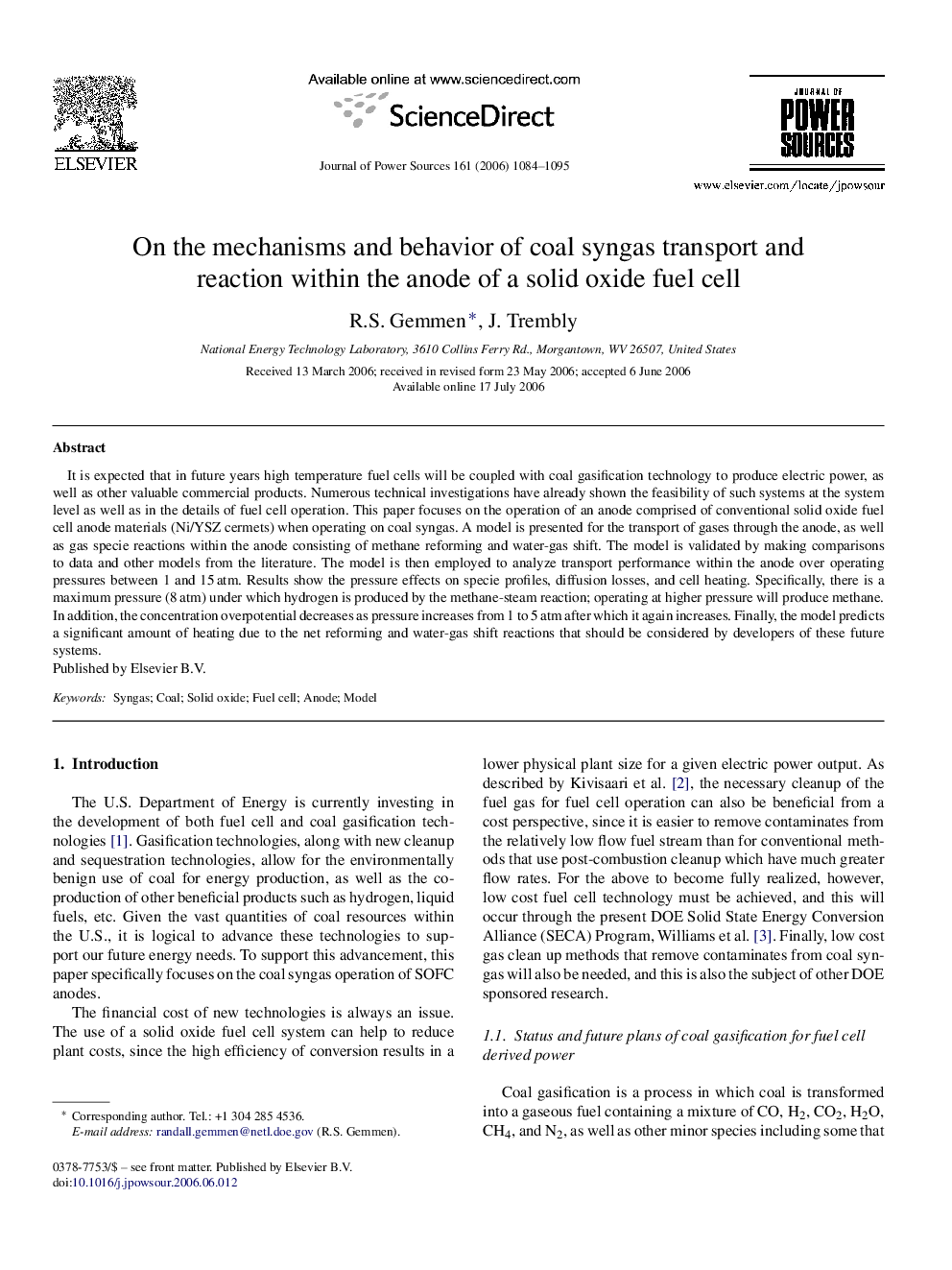| Article ID | Journal | Published Year | Pages | File Type |
|---|---|---|---|---|
| 1292057 | Journal of Power Sources | 2006 | 12 Pages |
It is expected that in future years high temperature fuel cells will be coupled with coal gasification technology to produce electric power, as well as other valuable commercial products. Numerous technical investigations have already shown the feasibility of such systems at the system level as well as in the details of fuel cell operation. This paper focuses on the operation of an anode comprised of conventional solid oxide fuel cell anode materials (Ni/YSZ cermets) when operating on coal syngas. A model is presented for the transport of gases through the anode, as well as gas specie reactions within the anode consisting of methane reforming and water-gas shift. The model is validated by making comparisons to data and other models from the literature. The model is then employed to analyze transport performance within the anode over operating pressures between 1 and 15 atm. Results show the pressure effects on specie profiles, diffusion losses, and cell heating. Specifically, there is a maximum pressure (8 atm) under which hydrogen is produced by the methane-steam reaction; operating at higher pressure will produce methane. In addition, the concentration overpotential decreases as pressure increases from 1 to 5 atm after which it again increases. Finally, the model predicts a significant amount of heating due to the net reforming and water-gas shift reactions that should be considered by developers of these future systems.
